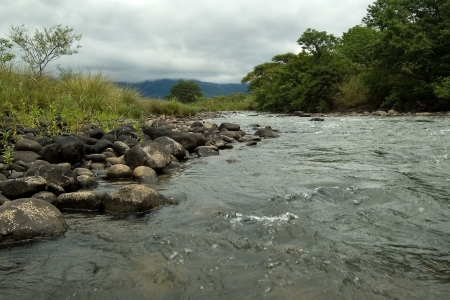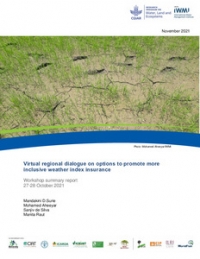A methodology used to ensure sustainable freshwater use and supply is now being used to develop national plans in countries like Nepal.
Developed by the International Water Management Institute (IWMI) and the CGIAR Research Program on Water, Land and Ecosystems (WLE), E-flow calculators are a family of software built to rapidly assess ”environmental flows” to help scientists and decision makers better understand how much water remains for supply and use in a river basin or other system.
Environmental flows or E-flows, describe the quantity, quality and timing of water flows needed to sustain freshwater ecosystems so they can continue to provide services to society. The online E-flow calculator can help decision-makers decide how to balance water use needs with environmental needs by establishing an E-flows baseline.
The E-flow calculator has been put to use in river basins across the world. And now, Nepal’s Department of Water Resources and Irrigation used an estimation of the country’s E-flow requirements to support the development of the country’s National Irrigation Master Plan. In response to a request for assistance, IWMI developed the first desktop tool for E-flow assessment in Western Nepal under United States Agency for International Development (USAID)/Nepal's financial assistance to Digo Jal Bikas Program (2017 - 2019). The Western Nepal E-flows calculator (WENEFC) is a simple user-friendly software package for rapid analysis of E-flows in one of the most climate vulnerable areas of the country.
What makes the WENEFC particularly effective is that it considers not just hydrological and ecological, but also socio-cultural aspects of E-flows. Rivers serve a number of uses including fishing, farming and recreation for nearby communities. Evaluating these uses helps to improve environmental impact assessments. The goal is that the tool will inform government officials before water projects are initiated, ensuring better benefits to communities.
“IWMI has also played a major role in building capacity and awareness in Nepal around the concept and methods of calculating E-flows,” says Luna Bharati, IWMI principal researcher. “We’ve prioritized building local skills by organizing workshops and training courses as well as developing university curricula for national universities.”
IWMI will expand on these efforts by strengthening relationships between experts and communities in order to tailor WENEFC to localized water needs. Additionally, WENEFC will extend its reach to larger segments of the Western Nepal river basins. Over time, WENEFC will provide a compromise between satisfying human demands for economically important uses of water and maintaining the ecological health of a river.
Globally, the Food and Agriculture Organization of the United Nations (FAO) has launched an E-flow guideline based largely on the IWMI E-flow calculator. The guidelines and data generated through the calculator have been provided to all the countries of the world to report on Sustainable Development Goal 6.4.2 on alleviating water scarcity through monitoring 'water stress', which is caused when water withdrawal outpaces supply and replenishment. This can lead to an insufficient quantity of water for drinking, irrigation, sanitation or industry.
Over the last 15 years, IWMI/WLE have steadily improved the determination of E-flows making use of the online calculator, publishing its first assessment of the E-flow requirements of the world's river basins in 2004.
“Scientists use a variety of methods to define the E-flows needed to maintain healthy rivers,” says Chris Dickens, principle researcher at IWMI. “These range from simple desktop methods to approaches that require teams of experts and a year-long survey of a single river ecosystem. The E-flow calculator fills a major need in that it allows every river in the world to be assessed, albeit at a lower level of confidence than some of the intensive approaches mentioned above”
These powerful tools are applicable across the globe, and IWMI/WLE aim to continue promoting their development and use as a key way to set thresholds/limits for river water withdrawal and use.
***
Support for e-flow work was provided by Wetlands International, with funds from the Dutch Embassy in Mali, for the Inner Niger Delta; the German Agency for International Cooperation (GIZ) for the Nile Basin; the United States Agency for International Development (USAID) in Nepal; and HSBC bank and WWF-India. Key aspects of this work form part of the CGIAR Research Program on Water, Land and Ecosystems (WLE), supported by CGIAR Trust Fund donors.





/index.jpg?itok=EzuBHOXY&c=feafd7f5ab7d60c363652d23929d0aee)









